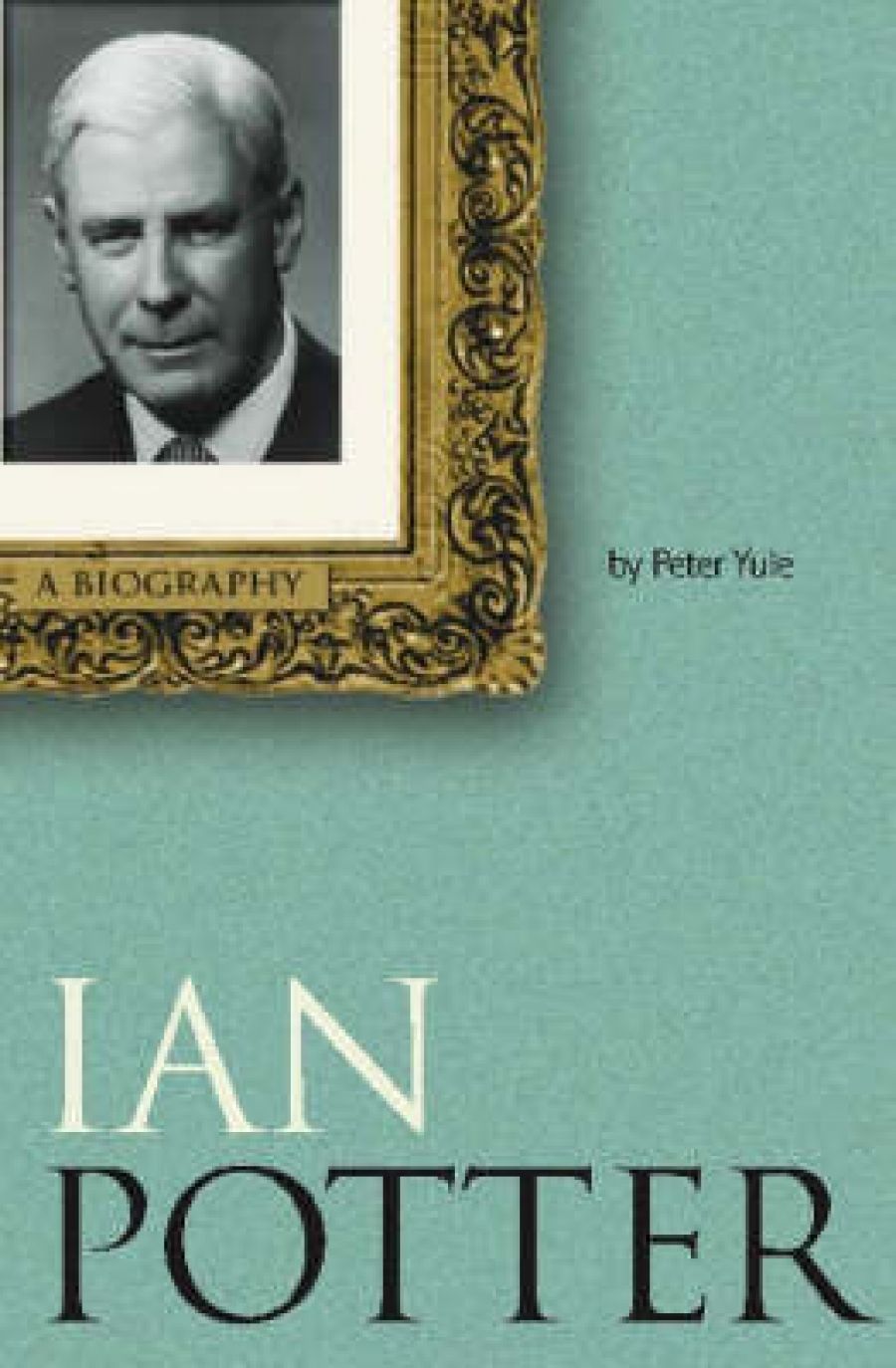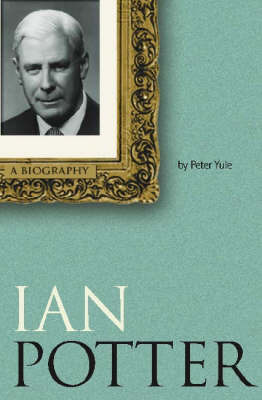
- Free Article: No
- Contents Category: Non-fiction
- Review Article: Yes
- Article Title: Rather more money
- Online Only: No
- Custom Highlight Text:
‘The very rich are different from you and me’, F. Scott Fitzgerald thought; and so he told Ernest Hemingway. Hemingway, who came back with a deflating reply, ‘Yes, they have more money’, boasted that he had won that little exchange. Yet Fitzgerald was right; and he proved it in The Great Gatsby and Tender is the Night. In the American novel more generally, money creates and defines character; as it does in Theodore Dreiser’s The Titan or Edith Wharton’s The Custom of the Country. Destructive though it may be in these novels, the making of a fortune is an expression of power and a source of drama.
- Book 1 Title: Ian Potter
- Book 1 Subtitle: A biography
- Book 1 Biblio: Miegunyah, $59.95 hb, 431 pp
- Book 1 Cover Small (400 x 600):

- Book 1 Cover (800 x 1200):

It is not so in the Australian novel, which is rather shy about success, and not much interested in showing how money is made. We don’t have a Horatio Alger tradition in which blameless hard work leads to riches and a millionaire’s happiness is well deserved. The triumphant opening line of Such is Life (1903), ‘Unemployed at last!’, is closer to our national sense of self – not as we are, but as the free spirits we like to imagine the true Australians to be. The Fortunes of RichardMahony (1917–29) dramatises the goldfields and the stock market as the stuff of delusion – dangerous dreams that end in madness. Elliot Perlman’s recent novel Three Dollars (1998) is about the dehumanising pressures of the marketplace, seen from the viewpoint of the powerless.
Perhaps, then, we can look to Australian biographies for discoveries about the very rich. Paul Barry’s Rise and Rise of Kerry Packer (1993) opens up that world, even though it doesn’t quite explain it. Biographies of Rupert Murdoch are limited in what they reveal – inevitably with that living subject – but at least they have a narrative drive, and a sense of personality. Now we have a solid but colourless account of the life of Ian Potter (1902–94) by the well-known historian Peter Yule.
Yule takes his hero back to the beginnings, which include farming forebears in Scotland, and the emigration to Australia by Ian Potter’s grandfather in the 1880s. Potter’s father, however, did not make good, either in Australia or in England, to which he and his young family briefly returned. Leaving school at fourteen, Ian Potter made his way without help from his family, or, it seems, from anyone else. In his mid-twenties, he qualified for matriculation, studying part-time; and enrolled for a degree in economics at the University of Sydney, in which he did well. After four years with the Melbourne stockbroking firm of Edward Dyason and Co., Potter became private secretary to R.G. Casey, then assistant treasurer in the federal government. This was a valuable introduction to the world of politicians and policy-makers, in which Potter’s networking skills developed fast. At the age of thirty-three, in 1935, he set up his own business in Melbourne as a stockbroker. Within ten years, as World War II ended, Potter had made himself, in his biographer’s view, ‘the dominant force in Australian finance’.
How Potter created his financial empire is ably told. Yule emphasises Potter’s quickness to move on ahead of the rest, as he did most notably in the mining industry. Hard work, energy, shrewdness and friends in high places: Potter had all of these. What success meant to him is harder to discern. He gave no newspaper interviews, appeared only once on television, and, in spite of four marriages and three divorces, gave little fodder to the gossip columns.
Potter lived and travelled well, but it does not seem that conspicuous consumption was a driving force. Probably the most rewarding part of the Yule biography is its account of Potter’s many major philanthropic acts, culminating in the Ian Potter Foundation, which is his memorial. Potter first championed the arts in 1952 when, as a member of Council at the University of Melbourne, he spoke up for the Union Theatre Repertory Company: ‘Oh, for goodness sake, give them ten thousand pounds to shut them up.’ He doesn’t sound like a dedicated theatregoer at that stage, and it is hard to know whether or not a passion for the arts or the sciences ever emerged, in spite of his massive support. Yule quotes letters in which a fine production or an interesting scientific venture is noted, but Potter had no gift for words. Reproducing so many dull and dutiful letters does nothing for the reader or, indeed, for the subject. More eloquent, perhaps, are the sumptuously reproduced colour illustrations, representing Potter’s private art collection and his many gifts, through the Potter Foundation, to Australian galleries,
Was Ian Potter ‘different from you and me’? Yule’s diligent biography doesn’t reveal the private self. We have to leave it at Hemingway’s level: ‘Yes, he had more money.’


Comments powered by CComment